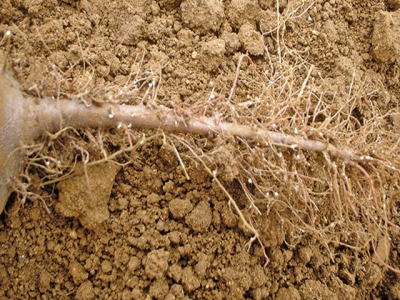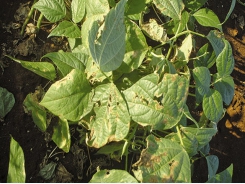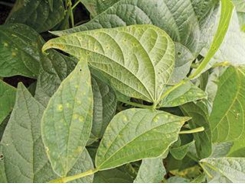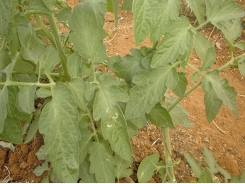Learning to live with the beet cyst nematode

The cyst nematode (eelworm) get its name from the hardened cyst that it forms to protect its eggs.
These female cyst eelworms are full of eggs and protruding from the root walls. The worms are normally very small and translucent. Photo: Bill Kerr
The two best known cyst nematodes are the beet cyst nematode (Heterodera schachtii) and the yellow potato nematode (Globodera rostochiensis). The latter, also known as the golden nematode, is a notifiable pest and currently restricted to a limited area. In this issue, we shall therefore consider only the beet cyst nematode.
This can live for over six years without a host. As its name implies, the beet cyst nematode is partial to beet, but also attacks the cabbage family (such as cauliflower, cabbage, broccoli and turnips) and much else. In fact, this pest has more than 200 host species, and is all but impossible to control. It is simply too impractical to keep a land free of host crops until the nematodes die out. One simply has to live with the pest.
My introduction to Heterodera schachtii took place many years ago when visiting a vegetable farmer who farmed well and looked after his soil. Standing at the edge of a beet land, I said it looked as if he had an eelworm problem. There were large patches of stunted plants, which I knew would wilt before the others. The farmer said he had checked and it was not eelworm. He thought his soil was becoming tired after many years of cropping.
When I lifted a few plants, I found white spots on the roots. The farmer knew about these and assumed they were grains of lime adhering to the roots. I wasn’t convinced, especially as he had only been on the lookout for root knot eelworm, a common species on beetroot. I reckoned he was dealing with the beet cyst nematode.
When I phoned the ARC to report my suspicion, they thought I was mistaken and were unconcerned. A few months later, I had occasion to visit the institute and took samples with me which I showed to the nematologist. He was shocked. Although he was about to retire, he was asked to stay on to carry out a survey and educate farmers about this dangerous pest.
That was many years ago, but the problem has persisted. The cysts are extremely tough; they can pass through the digestive system of cattle and withstand most soil fumigants, unlike other eelworm species. The fumigant, methyl bromide, which is no longer available, could kill the eggs in most cysts, but at a cost that was usually higher than buying clean land.
Easily transmitted
Beet cyst nematodes are carried to clean areas in soil adhering to tractors, implements and footwear. They can even move downstream in muddy water when heavy rain falls on infected farms. These nematodes were initially spread by cabbage seedlings planted in seedbeds before seedling trays became the preferred method. Farmers would sell or give away surplus plants, spreading pests to new farms.
One of my clients, who bought a new farm, took Swiss chard seedlings from the old farm and planted them on the new farm, spreading it to the new land. It cost him a fortune in remedies and reduced yield.
Be vigilant
Once it takes hold in one land of a farm, the beet cyst nematode will quickly spread to all lands on the farm. If you plant susceptible crops, be vigilant and make sure the pest is not introduced to your farm. Even a company representative with mud on his shoes from an infected farm can introduce it to your farm when examining your crop.
Có thể bạn quan tâm
Phần mềm

Phối trộn thức ăn chăn nuôi

Pha dung dịch thủy canh

Định mức cho tôm ăn

Phối trộn phân bón NPK

Xác định tỷ lệ tôm sống

Chuyển đổi đơn vị phân bón

Xác định công suất sục khí

Chuyển đổi đơn vị tôm

Tính diện tích nhà kính

Tính thể tích ao hồ




 More on controlling powdery mildew in peppers
More on controlling powdery mildew in peppers  Some important green bean pests
Some important green bean pests